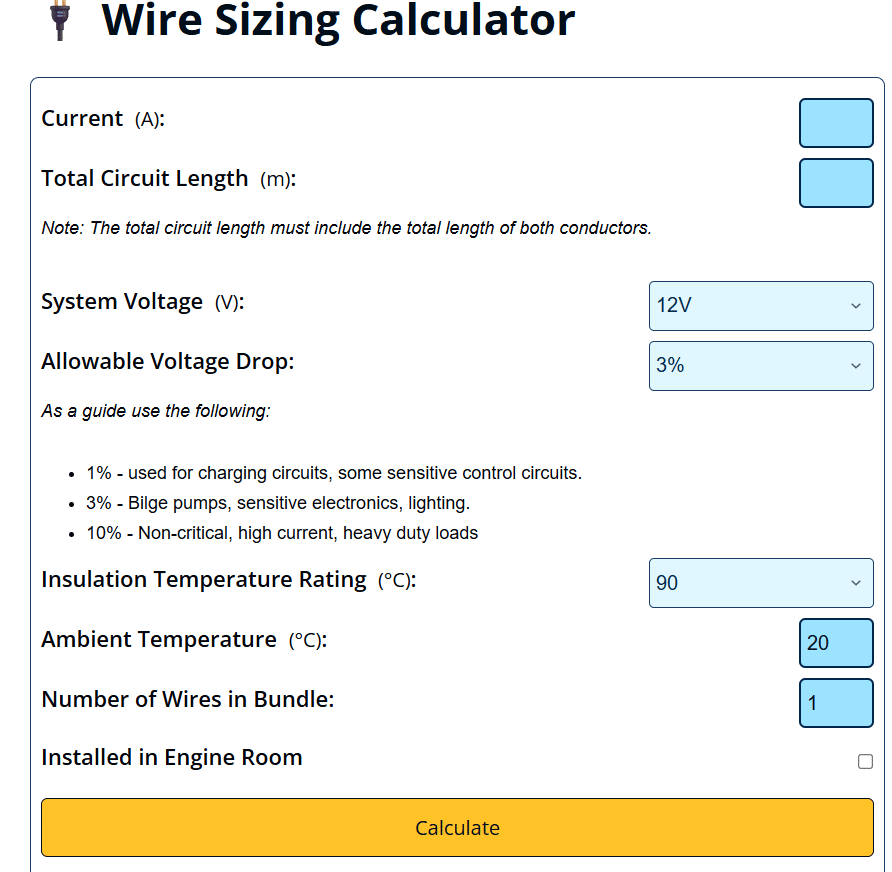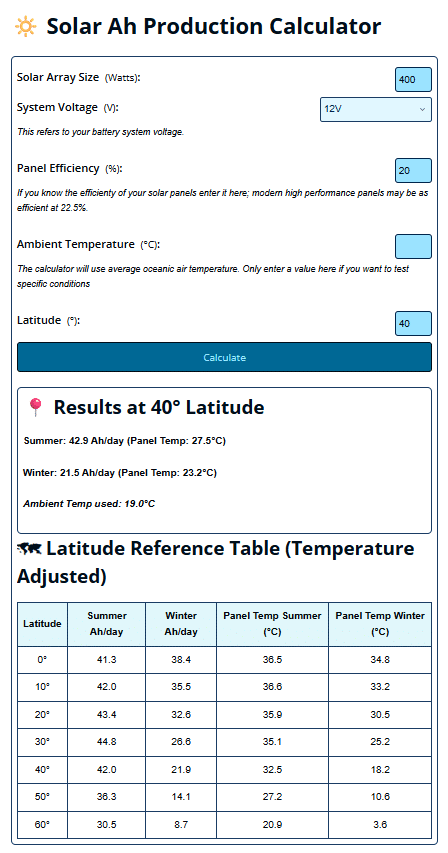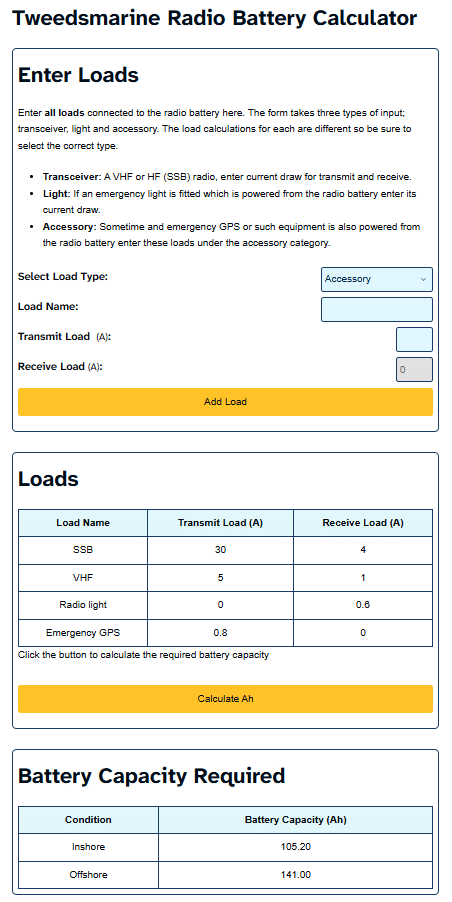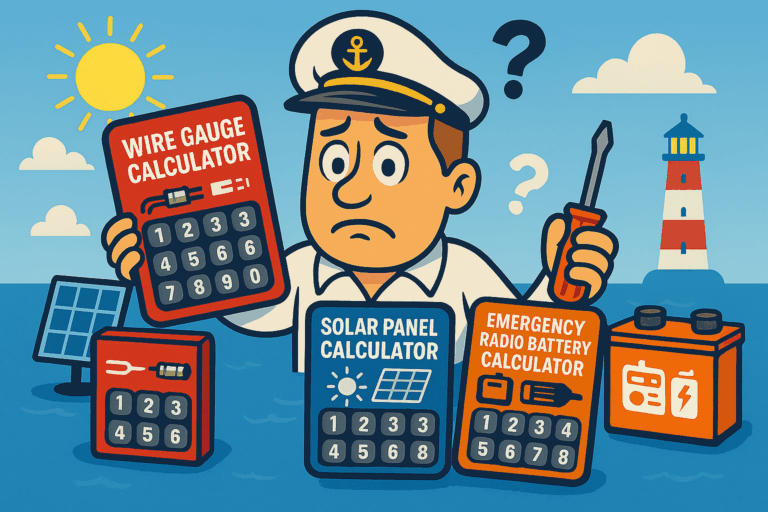Making Boaters’ Lives Easier with Calculators
Following the TweedsMarine Marine Electronics ethos of helping boaters to make their life simpler and safer, especially when dealing with electrical and electronics subjects, I have made a few more calculators.
Let me know what other calculators you would like to see available online. Any subject provided that it is boat-related, and I’ll take the challenge. Leave your suggestions in the comments form at the end of this article or get in touch via the contact page.
The Correct Wire Gauge

At some stage, everybody who owns a boat will want to run a new wire for some item of equipment that they are adding to their collection of toys. But what size wire is correct for the job? The TweedsMarine wire size calculator makes this job easy for you. Go to Wire Size Calculator page, enter the current draw of the device that you are powering and the total circuit length, select the appropriate voltage drop and any derating factors, hit calculate, and the calculator will spit out the recommended wire gauge and fuse rating.
Always use marine-grade wire, which means that the conductive core of the cable is made from many thin filaments of tinned copper. You can recognise that it is tinned because the exposed wire should be silver in colour, and not copper-coloured. The insulation should also be stamped with markings that indicate that it is marine grade and the name and numbers of the standards body to which it was manufactured.
How Much Charge Will My Solar Panels Provide?
Ever wondered how much the solar panels should put into the battery per day? This calculator will give you a ballpark figure based on the rated Wattage of your panels and your latitude of operation. The solar calculator assumes that the panels are flat (horizontal) and not shadowed.
Solar panel efficiency is affected by temperature. I have included a lookup table in the calculator for average ambient oceanic temperatures by latitude. The calculator then works out the likely panel temperature and adjusts the efficiency accordingly. If you are inshore or on a lake, you will want to enter the ambient temperature that interests you.

The calculator provides a panel of results for your latitude and a table of expected output for the summer and winter solstice by latitude. This information will give you enough information to understand whether you can fit enough solar panels on your boat, in a seamanlike manner, to cover your needs or whether you will have to look towards other sources of energy.
Emergency Radio Battery

In New Zealand, Part 40D, radio, of the MNZ Rules for commercial vessels requires ships to have a reliable emergency power supply for their marine radios, ensuring continuous communication in the event of a main power failure. This is an important safety measure outlined in standard Maritime NZ Rules, Part 40D, for Fishing Ships and relevant radio communication regulations.
Having an emergency battery on many pleasure boats is often overkill, but if you are a long-distance cruiser who may depend on radio, or satellite communications (which is also radio), for an extended period, it’s a pretty good idea to install one. This Part 40D Radio Battery Calculator was designed to enable boat owners to check their backup battery capacity before surveys and rectify any deficiency before the surveyor or inspector’s visit. But it is just as useful if you want to plan a radio battery installation for yourself.
A battery of the capacity suggested by this calculator will give a minimum of six hours of heavy use in an emergency.
Reminder: Let me know about any other calculators you would like to see available online. Any subject provided that it is boat-related, and I’ll take the challenge. Leave your suggestions in the comments form below or get in touch via the contact page.




